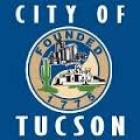Cooperative purchasing trends – Part 2
As we start 2016, GPN reached out to Marcheta Gillespie to get her views on cooperative purchasing, including the impact of technology on cooperative purchasing. Gillespie is director of procurement in Tucson, Ariz.
As we start 2016, GPN reached out to Marcheta Gillespie to get her views on cooperative purchasing trends. Gillespie is director of procurement in Tucson, Ariz.
She has been involved in cooperative purchasing for more than 15 years, and has been in public procurement for 24 years. Gillespie’s a past president of NIGP: The Institute for Public Procurement, and also served on the NIGP’s board of directors for more than 10 years.
GPN: Are there differences in the way cooperative purchasing is evolving in cities vs. counties vs. states, large vs. small governments or in different parts of the U.S.? 
Marcheta Gillespie: It depends. Smaller agencies often need to use cooperative contracts more so than their larger counterparts simply due to staffing and capacity. Smaller agencies don’t bring the purchasing power to the table like the larger agencies. For example, a small town may purchase 20 vehicles in a year, whereas a larger agency may purchase 200. Clearly, the smaller agency will never derive the pricing model that the larger agency would by sourcing its own contract. Therefore, if the goal of the agency is to spend less, it makes sense for the agency to use a cooperative contract. Similarly, that small town may lack the subject matter expertise to write a scope of work for that vehicle. Using a cooperative contract can also resolve that issue.
You also have the dynamic of larger agencies being able to absorb the impact of the economic downturn more easily than the smaller agencies. Fewer resources force the organization to determine where and how best to use their scarce resources. So outsourcing some of the contracting through using cooperatives is often a very realistic solution. Even as larger agencies are continuing to be impacted by the economic downturn, you are seeing an increase in cooperative contract use by those agencies.
The maturity of the procurement function also has an impact on cooperative procurement activity. A more mature procurement organization has a more skilled workforce capable of sourcing large, complex procurements. Less mature organizations may focus their resources on core, basic contracting and look to cooperatives to address their larger, more complex needs.
I have seen “pockets” of the country where cooperative procurement is more readily embraced and utilized, just as I have seen parts of the country where governments still struggle to establish the enabling legislation, regulations or policies to even permit cooperative contracting use. It really is a blend out there.
I firmly believe part of my job as a procurement professional is to help educate our colleagues in our community and to provide them the information and tools they need to optimize all their sourcing tools, including cooperative procurement. Awareness and access are the keys to help ensure all government agencies are more successful in their contracting role.
GPN: What effect is technology having on cooperative purchasing?
MG: Technology facilitates the process of the procurement professional accessing the cooperative community to determine what is available to meet his/her needs. However, just the mere presence of technology for a cooperative program does not mean it is valuable. There needs to be easy access to the type of information that a procurement professional needs to make an informed decision. The more readily available all the relevant information is, the more inclined the procurement professional will be to utilize a cooperative contract. The more they have to dig or ask for it, the more inclined they may be to go to another source.
The technology is also beneficial on the procurement community side of the equation. With so many listservs, social media sites and professional discussion groups, the average procurement professional has access to a vast network of resources and information on cooperative procurement. I read discussions weekly about cooperative procurement on social media, in magazine articles, on blogs or through emails. In some ways, it poses further challenges to the procurement professional trying to research information to determine what is good information and what is not. That’s why you are seeing more and more training courses, presentations and webinars on cooperative procurement.
GPN: Will the movement to certify cooperative purchasing organizations pick up steam in 2016?
MG: I understand the value and purpose for offering this service to the procurement community. As I mentioned previously, there are many of our colleagues who need assistance in vetting through the various cooperatives and cooperative contracts. It is important for the cooperative community and the public procurement community to work together to provide value to the procurement professionals. I believe both communities are committed to that, and it’s just a matter of finding a way of doing so in a mutually beneficial manner. At the end of the day, it’s about delivering value-added services to enable the procurement professional to make the best decision possible.
GPN: What product areas will receive greater coverage in cooperative purchasing programs in 2016? Sustainable/green products? Products used in emergency response or disaster recovery? Do you see greater coverage in any other product areas?
MG: I definitely see increased coverage in the areas you mentioned. I also see increased coverage in “niche” markets where individually, agencies may not have large volumes of need, but collectively, the procurement community brings a fairly large volume to leverage.
I also see opportunities in new and emerging technologies in the market. As more and more industries find new and better ways to deliver their services, you’ll continue to see new products and services to sell. When I started working in the cooperative arena, we didn’t have a contract for tablet computers, let alone cloud-based services.
I also see an opportunity for the cooperatives to continually improve upon their contracts, perhaps also bridging more into contract administration and increased contract compliance. Identifying the “gap” that is emerging or widening for the government agencies that are experiencing or continuing to experience resource reductions will identify new opportunities in partnership for the cooperatives.
In part 1 of this interview, Gillespie outlined cooperative purchasing changes, trends, and developments that will we see in 2016.
Michael Keating is Senior Editor at Government Product News, an American City & County sister brand.
_____________
To get connected and stay up-to-date with similar content from American City & County:
Like us on Facebook
Follow us on Twitter
Watch us on Youtube




















